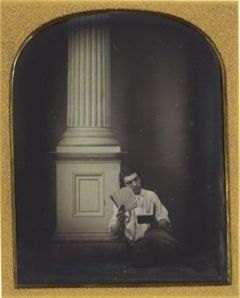Several aspects of creative communication were discussed with regard to literature and art, Silver Jubilee celebration of B.K.Art college a Review
B K College of Art and Crafts has completed its twenty-five years creative journey in Odisha and its existence resulted in the paradigm shift in art education and propagation both within the state and beyond. To commemorate the success, AlumniBKCAC and
The celebration begun with the inauguration of a public art and site specific art workshop, curetted by Jagannath Panda on the 20th of January 2010. This National workshop was organized at the Lalit Kala Regional centre, 
The college event started with a national Symposium on Creative Communication. Prof. Kanchan Chakraverti, Art Historian from Santiniketan, inaugurated the symposium on 22nd January 2010. Prof. Ganeswar Mishra, Prof. Sourindra Barik, Dr. Dinanath Pathy and Convened by Dr. Pradosh Mishra. Several aspects of creative communication were discussed with regard to literature and art. The participants focused on methods of communication and its relevance to art and how art needs to be communicated to the audience/viewer. The afternoon session was devoted to the audio-visual presentation by select artists like Ashish Pahi and Kanta Kishore which was coordinated by Dr. Pradosh Mishra.
On the 23rd of January, an exhibition by the alumni of BK College of Art and Crafts was organized at the college campus on the foothills of the ancient site Khandagiri and Udayagiri. The Chief Minister of Odisha, Shri Naveen Patnaik, who not only thoroughly viewed the works, but also had an intimate dialogue with the artists, inaugurated this exhibition. Dr. Pradosh Mishra briefed the Chief Minster about the displayed art works, present state of art and trends, while Jagannath Panda explained him of the national and international issues related to art. The curator of the show, Sovan Kumar assisted the Chief Minister to release the Exhibition catalogue. Ashok Nayak accompanied the Chief Minister to the annual Art Exhibition of the College. He also felicitated the Former Principal, Kala Bhawan, Santiniketan, Prof. Kanchan Chakraverti, for his contribution to the art historical studies in the eastern subcontinent, Dr. Dinanath Pathy, the first Principal of the college and Shri Adwaita Prasad Gadanayak, President, AlumniBKCAC for collaborating to the cause of art in Odisha. In his address, he emphasized on the rich cultural and art heritage of Odisha and its application in the contemporary art, defining a new approach of continuity. He appreciated the effort of the AlumniBKCAC for the entire event.
This programme was followed by an interaction by the faculty and alumni of the college, with the students under training, under the event title, My College: My Art. Dr. Dinanath Pathy, Shri D N Rao, Shri Baladev Maharatha, Shri Ramahari Jena, Shri Siba Panigrahi, Shri Adwait Gadanaik, Shri Jagannath Panda and Shri Ashok Nayak. As a continuation to the event, many of the passed out students and participating artists showed their creative video short documentations. Both the academic sessions was coordinated and convened by Dr. Pradosh Mishra.
In the evening, His Excellency the Governor visited the exhibition hall and was accompanied by the participating artists. His keen interest in art motivated the young and dynamic students for an intimate interaction. The Governor also felicitated the Teachers and staff of the college for their valuable contribution to the art education. The Governor graced the cultural programme at the college campus at the newly prepared amphitheatre, where Sakhinata, a traditional dance form of Odisha, Odishi, the classical dance form, and Sambalpuri, another folk dance form was presented before him.
The Silver Jubilee functions were supported by Subrat Mullick, Anjan Sahoo, Tarakant Parida, Veejayant Dash, Meenaketan Patnaik, Pratap Jena, Aparna Ray, Bidyutlata Patasahani, Sangeeta Mohapatra, Ramakanta Samantray, Sangram Moharana, Sudarshan Biswal, Projesh Mohapatra, Kirti Kishor Moharana and many other well wishers of AlumniBKCAC.
The Ashok Art Gallery is internationally known for one of its most important holdings: more than 2000 major works by the world's most significant Artists.Over the past years, as Ashok Art Gallery has become a major centre for contemporary visual art, the Gallery has built a strong collection of contemporary work of different artists, became a sponsor of the STANDUP-SPEAKOUT Artshow, Organized by Art Of Living Foundation and United Nations.Organized an International Contenmporary Art Exhibition including artists from USA, The Nederlands, Pakistan and India.We have also participated at Art Expo India Mumbai and India Art Summit Delhi







 **Nicholas Forrest is an art market analyst, art critic and journalist based in Sydney, Australia. He is the founder of
**Nicholas Forrest is an art market analyst, art critic and journalist based in Sydney, Australia. He is the founder of 



























